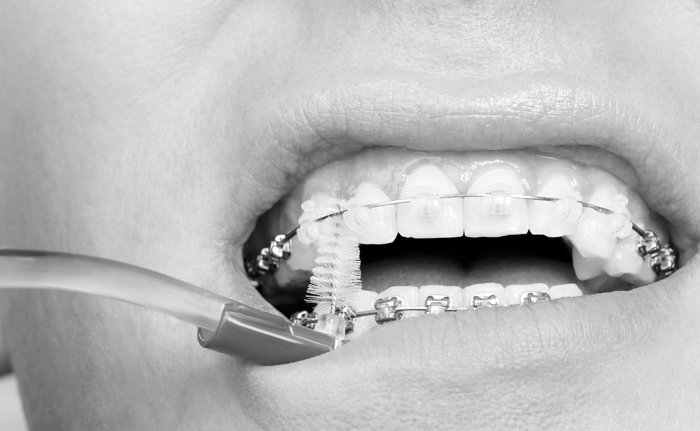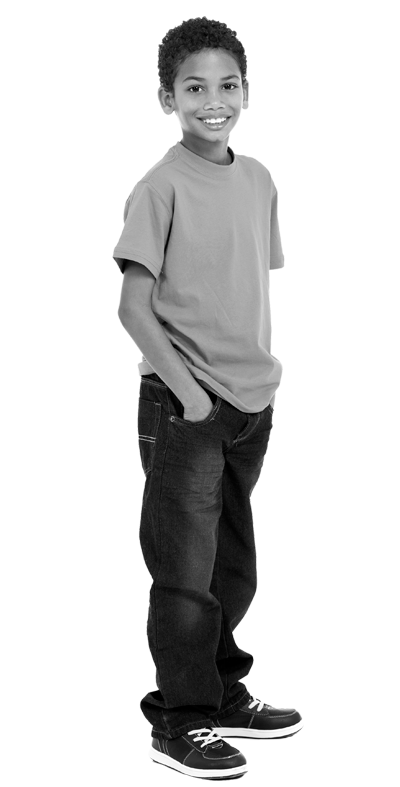3375-F Capital Circle NE, Tallahassee, Florida 32308 P: (850) 877-1692
Adult Orthodontics

It’s never too late to change your smile. More adults than ever are seeking the guidance of an orthodontist. Quite often parents feel it’s their turn now that the kids are out of braces.
Proper alignment can happen at any age as long as your gums are healthy and your bone structure is good. Burch Orthodontics offers a wide variety of treatment plans designed for adults. Your new smile starts today!
It’s time to improve your health, personal appearance and self-esteem. Crooked teeth and a poor bite can lead to gum disease, bone loss, abnormal enamel wear, tooth decay, jaw joint pain and headaches. New techniques and technologies can greatly reduce discomfort levels, shorten treatment time and reduce visit frequency. These options may include traditional metal braces, translucent braces, or transparent aligners which can be worn at night, often used for improving mild cases.
During your initial consultation, Dr. Burch will determine which treatment will be the best for addressing your specific needs. We will outline your recommended treatment plan including expected time of treatment and approximate cost.
So join the growing group of adult patients at Burch Orthodontics who agree that it’s never too late to improve your greatest asset – a healthy smile. Schedule your complimentary consultation today by completing the short form on our site or calling our office at (850) 877-1692.
Orthognathic Surgery
Abnormalities of the facial bones, specifically the jaws can often lead to difficulty chewing, talking, swallowing and even more serious conditions like sleep apnea and TMJ disorders. Orthognathic surgery was specifically developed to correct certain conditions which are not easily solved by traditional braces. During surgery the bones can be cut then re-aligned in a more favorable way, held in place by screws or a combination of plates and screws. This is also known as corrective jaw surgery.
In Tallahassee, orthognathic surgery is commonly performed by either a maxillofacial or oral surgeon, working with an orthodontist, such as Dr. Heather Burch. Though most commonly used after cleft palate reconstruction or other major craniofacial conditions, this type of surgery can also help correct facial profile in extreme orthodontic cases. We use the latest digital imaging technology to demonstrate the overall benefits you can expect post-surgery. By following a computerized treatment plan your recovery time is greatly minimized. Only the most high-tech materials are used including titanium plates and specialized surgical screws which provide stability and strength during your treatment. Modern advances in these technologies have greatly reduced post-surgical recovery time, allowing you to return to a normal routine in as short a time as possible.
The first step to determine if orthognathic surgery is right for you is to consult with Dr. Burch during your initial consultation. As with all first visits, this appointment will be complimentary. Schedule your consultation today by completing the short form on our site or calling our office at (850) 877-1692.
First Days In Braces
The adhesive used to attach the braces to your teeth cures with a special UV light. You can eat any time after leaving our office. We ask that you remember the list of foods that may be harmful to your braces. Until you become accustomed to eating with your new braces, you may find it beneficial to follow a diet consisting of all soft foods.
Initially, the braces feel like they stick out. This is normal. As you become accustomed to your braces and tooth alignment improves, this sensation will cease to be a concern. Although the brackets have been rounded and smoothed, until the cheek tissues have toughened, you may find it helpful to use a small piece of orthodontic wax around the bracket that is creating the irritation. If your supply of wax runs out, call our office for more. The wax may also be purchased at a local drug store.
You will probably notice some discomfort beginning a few hours after your braces are placed. Some teeth, usually the front teeth, may be tender and sensitive to pressure. Occasionally, patients report that they experience no discomfort, but most patients have some soreness beginning during the first few hours and dissipating within a day or two. Exactly when the discomfort ceases is impossible to predict and differs with each patient. Non-prescription pain remedies are recommended for discomfort. For maximum effectiveness, it may be best to take such medications before the discomfort begins.
Before Leaving the Office
There are routine steps that we ask you to take prior to leaving the office. These steps will minimize discomfort related to irritation from the braces and ensure an optimal response to treatment. Please make these steps a part of each office visit:
- Using your tongue to check that the wire ends do not extend into areas which might poke or abrade the cheek or tongue.
- Make sure you understand what you are to do until your next appointment. This includes wearing elastics as instructed or following specific hygiene and diet instructions.
- Make sure you have an adequate supply of dental wax, elastic bands, or other related materials you may need between appointments.
- Always schedule your next appointment before leaving the office. Waiting 1-2 weeks after an appointment before scheduling your next office visit complicates the scheduling process, since appointments are programmed 8 weeks in advance. Postponing appointments is a common contributor to overtime treatment.
Appliance Care & Use
Braces
Every day when you brush your teeth, check to make sure you do not have any loose braces by gently trying to slide each one. If a wire or band comes loose, do not be alarmed. If a tie wire is protruding and irritating, use a blunt instrument (the back of a spoon or a pencil eraser) to carefully push the wire out of the way. If you have a broken or loose appliance, please call us to determine if your breakage is urgent and requires immediate repair. If a piece comes loose, save it and bring it with you to the office.
Elastics
Elastics are essentially rubber bands that are attached to brackets, usually between the upper and lower or front and back teeth, applying tension and causing teeth to move. Elastics can be used in many ways depending upon the treatment goals.
Elastics move the teeth in a direction they could not be moved using braces alone. Your teeth and jaws may be tender during the first few days elastics are worn. This is normal, and the tenderness should begin to disappear within a week. If it persists longer, please call our office. Rinsing with hot salt water will help reduce the tenderness.
Your elastics may be difficult to put on at first, but this will become easier with practice. You may remove them only when eating or brushing your teeth. Leave them in during snacking. Be sure to replace the elastics with new ones immediately after meals and brushing. Part-time wear does NOT move teeth, but it does cause prolonged discomfort.
Change the elastics routinely even if they are not broken. After a while, elastics lose their strength. Change them after each meal and before bedtime. If one elastic breaks, replace both sides.
Carry extra elastics with you at all times. If you don't have enough to last until your next appointment, please stop by our office and pick more up or call us and we can send more to you. We don't want you to run out.
Before you leave the office, be absolutely sure you understand exactly where to hook the elastics. Hooking them on incorrectly can be worse than not wearing them at all, as your teeth might move in the opposite direction. If you ever have any questions on how to wear your elastics, please do not hesitate to ask.
Removable Appliances
Wear your removable appliances and/or elastics faithfully, as directed by the staff and Dr. Burch. Your estimated treatment time is based on full cooperation with wearing appliances and elastics (rubber bands) as directed.
A removable appliance is carefully designed to move or hold your teeth in place. It should be worn according to instructions and brought to each appointment. Wear your appliance at all times, even while you are asleep. It may be removed while swimming or engaging in vigorous sporting activities. In two to three days, your speech will return to normal with the appliance in place. Avoid flipping your appliance with your tongue. This can cause damage to your teeth or breakage of your appliance.
Your new appliance may make your teeth sore for a day or two, especially after an adjustment. If you have a sore spot on your gums, call our office so we can arrange to adjust the appliance. Clean your appliance by brushing it daily with toothpaste. Denture cleaner can also be used for a more thorough cleaning. Never wrap your appliance in a paper napkin or tissue and set it down on the table. You or someone else may throw it away. Don't put it in your pocket when playing or you may break or lose it. Whenever it is not in your mouth, it should be in its plastic appliance case.
Keep your appliance away from dogs or cats, as they love to chew on them. Avoid storing it near any source of heat. Do not boil your retainer to sterilize it! If needed, bring it to the office, and we will be happy to disinfect it for you. Do not soak your retainer in mouthwash. An additional charge will be incurred for lost or broken appliances. Please bring your retainers to all appointments.
Please do not eat any foods that could damage your appliances and delay your treatment. Wear a mouth guard for any activities that might injure your teeth, gums, or cheeks. Repairing broken braces requires longer appointments during school hours.
Retainers
Retainers are made from wires, clasps and plastic and are constructed for the purpose of holding the teeth. They are placed after the appliances have been removed. A removable retainer consists of colored plastic that goes behind the teeth and a wire that goes along the front. At first, your retainers will feel bulky, and speech may be a problem. The retainer may cause a slight lisp, but don't be alarmed: speech usually returns to normal within a few days. The day after you receive your retainer, your teeth may be a bit sore. This won't last long. The tissue on the roof of your mouth may become a little tender. You should get used to this in two to three days. Since retainers are removable, you must be responsible to use and care for them properly. Strict attention to instructions is essential.
Your retainer should be worn at ALL times except when eating at home, brushing, participating in contact sports, or swimming in a lake (or ocean) where they could not be retrieved if lost. When your retainer is not in your mouth, it should be kept in the case. Do not put it on a table where it might get knocked off or in a pocket where it may be easily cracked. Keep it away from dogs, which like to chew on retainers if given the opportunity.
If you must remove your retainer, NEVER wrap it in a paper towel, napkin or tissue. This is the most common way of losing a retainer. ALWAYS put it in the plastic retainer case we give you and always keep it in a safe place.
Your retainer should be cleaned after each meal and before going to bed. Retainers can be cleaned with your regular toothbrush and toothpaste. You may use a denture brush and denture toothpaste if you wish. Fill the sink with cool water to cushion the fall in case you drop it. Do not use hot water; it will cause warpage. Clean the retainer gently, being careful not to bend the wires. Before placing the cleaned retainer in your mouth, be sure you thoroughly brush your teeth. If the retainer or teeth are not kept clean, an irritation of the gums may result, and this can be serious.
If plaque builds up on the retainer over time, it will dry and harden like tartar and be difficult to remove with a brush. Denture cleaners like Efferdent or Polident are effective in removing this tartar. Follow the directions on the package. Leave the retainer in the cleaner no longer than 10 minutes; you can do this once a week if needed. To economize, try lemon juice first to dissolve and loosen the tartar before brushing.
Retainers are made to withstand normal use, but they crack or break if handled roughly. Retainers also can break if they are stepped on, dropped or placed in pockets. If yours breaks, be sure to bring in the pieces to your appointment. If your retainer becomes cracked, DO NOT wear it. Call our office immediately.
Your Dental Health
It's not easy to maintain consistent good oral health. That's because in the invisible but serious battle against gum disease and tooth decay, there's no neutral ground. You're either fighting it offensively, or your losing. The moment after you brush and floss, those native oral bacteria are repopulating their favorite playground, your mouth. Our approach includes the professional cleanings that your dentist provides and an emphasis on careful patient education so that you can continue the battle effectively at home.
To Maintain Your Dental Health
- Achieve a balanced diet. This can be achieved by eating a variety of foods preferably from each of the five major food groups: breads, cereals and other grain products; fruits; vegetables; meat, poultry and fish; milk, cheese and yogurt.
- Limit the number of snacks that you eat. If you do snack, choose nutritious foods, such as cheese, raw vegetables, plain yogurt or a piece of fruit. Each time that you eat foods that contain sugars or starches, brush your teeth.
- Brush twice a day with fluoride toothpaste. Clean between your teeth daily with floss or interdental cleaners.
- Maintain your regularly scheduled check-ups with your dentist.
Proper Daily Dental Hygiene Is Critical
The best way to remove decay-causing plaque is by brushing and cleaning between your teeth every day. Brushing removes plaque from the tooth surfaces. Cleaning between the teeth once a day with floss or interdental cleaners removes plaque from between the teeth and in the areas where your toothbrush cannot reach. It is essential in preventing gum disease.
Plaque Is Ever Present
Many of the foods you eat cause the bacteria in your mouth to produce acids. Sugared foods, such as candy and cookies, and starched foods, such as bread and crackers can all cause acids to form. Plaque produces substances that irritate the gums, making them red, tender and bleed easily. After a while, gums may pull away from the teeth allowing pockets to form and fill with bacteria. If the gums are not treated, the bone around the teeth can be destroyed. The teeth may become loose or have to be removed. In fact, gum disease is a main cause of tooth loss in adults.
Tips for Better Oral Hygiene:
- Carry a travel toothbrush. This lets you brush after eating, no matter where you are.
- Rinse after eating. This keeps food from sticking to your teeth when you can't brush.
- Try an electric toothbrush. Electric toothbrushes can make teeth cleaning easier.
Oral Hygiene

Having a clean mouth is important. It gives you fresh breath and a nicer-looking smile. Brushing and flossing removes a thin sticky film of bacteria that grows on your teeth. This sticky film, called plaque, is the main cause of tooth decay and gum disease.
Brushing
You will notice that it is much harder to keep your teeth clean with braces. Food becomes caught in the brackets and between your teeth. Brushing after meals and flossing will help prevent plaque from forming and should become part of your daily schedule. Use a soft toothbrush and brush at a 45-degree angle to the tooth in small circles above and below the brackets. Your toothbrush will wear out faster because of your appliances, so be sure to replace it whenever the bristles start to fray.
If plaque remains on the teeth for any length of time, it can leave a permanent white scar on the surface. A waterpik or an electric toothbrush can be a useful addition, however, please continue to see your dentist at least every 6 months for regular dental cleanings.
Flossing
Flossing with braces takes a few minutes to master, but the effort is well worth it. The first step to flossing is getting the floss under the wire that connects the braces together. A floss threader will help you get the dental floss underneath your archwires. Dental floss with a stiff end is also available. It is pre-cut and is very easy to insert underneath archwires.
Once the floss is under the archwire it can be wrapped around the tooth on one side. The floss is then pushed up toward the gum line and then pulled down toward the wire. This should be repeated four to five times to ensure all plaque is removed. Be careful not to put too much pressure on the wire as you pull down. Then wrap the floss around the neighboring tooth. Once both teeth are done, the floss is pulled out and the process repeated for the next two teeth.
Eating With Orthodontic Appliances
Diet and Oral Hygiene
There are certain dietary habits that are known to cause breakage of orthodontic appliances, as well as increase the risk of dental disease. Dr. Burch's aim is to achieve the treatment goals with as few disturbances as possible due to appliance breakage, and to minimize the side affects of poor diet choices. Remember, teeth move best in a healthy environment and in individuals with excellent overall health. Be sure you have a well-balanced diet.
Potential Harm to Your Teeth and Gums
Foods and drinks that may cause dental caries (cavities) should be restricted while wearing braces. Sticky food is to be avoided because of the increased risk of dental decay and appliance breakage. This type of food sticks to braces and remains on your teeth for long periods of time. If food or drinks high in sugar content are to be consumed, we advise having them with regular meals or at one given time of day. Please make sure that careful brushing and rinsing take place immediately afterwards. Between-meal snacks should be confined to foods without refined sugar, and should be followed by brushing or vigorous rinsing.
Potential Harm to Your Braces
Braces are attached to your teeth with an adhesive that normally will withstand the forces of eating. However, braces can be dislodged and wires bent or broken while eating certain foods.
Remember, if you have any questions about dietary restrictions or good food choices, please ask!
Foods To Avoid
For most situations, common sense will tell you what to avoid. Hard foods, sticky foods and foods high in sugar must be avoided. Hard foods can break or damage wires and brackets. Sticky foods can get caught between brackets and wires. Minimize sugary foods; they cause tooth decay and related problems. Nail biting, pencil and pen chewing and chewing on foreign objects should be avoided.
Examples of Sticky Foods to Avoid:
- Gum (sugar-free or regular)
- Licorice
- Sugar Daddies
- Toffee
- Tootsie Rolls
- Caramels
- Starburst
Examples of Hard Foods to Avoid:
- Ice
- Nuts
- Hard taco shells
- French bread crust/rolls
- Corn on the cob
- Apples (unless cut into small pieces)
- Bagels
- Chips
- Jolly Ranchers
- Pizza crust
- Uncooked carrots (unless cut)
It's important to regularly check your braces for bent or loose wires and brackets. In the event of a loose/broken wire or bracket, call our office immediately to arrange an appointment for repair.

REFER A FRIEND
Thank you for trusting your smiles with us. Refer a Friend or family member and receive a sweet treat!
LEARN MORE




